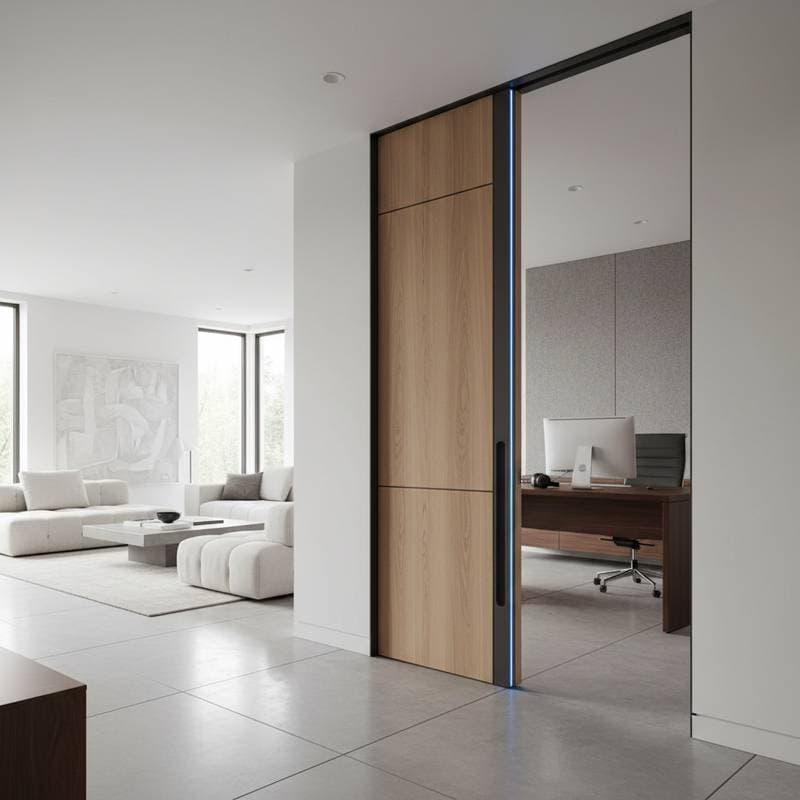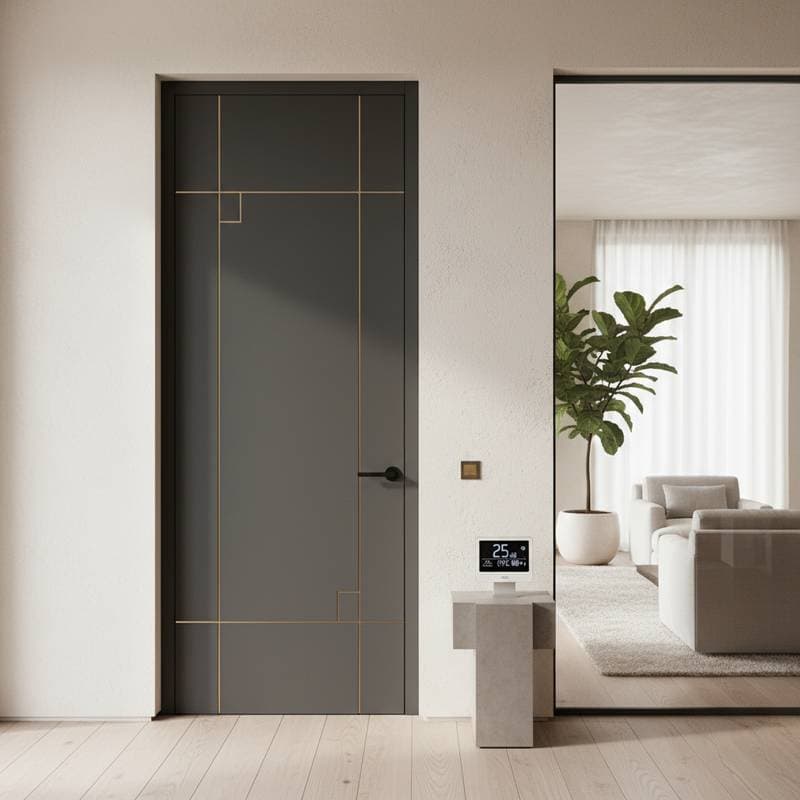Reduce Home Office Noise by 80% with Acoustic Doors
A quiet home office serves as more than a mere convenience. It forms the bedrock for concentration, efficiency, and well-being. As remote work becomes commonplace among homeowners, the task of shielding against external disturbances grows increasingly vital. Household discussions, television sounds, or street traffic can penetrate standard doors with ease. Acoustic doors offer a reliable, enduring remedy, capable of lowering noise by up to 80 percent. These doors integrate deliberate engineering, advanced materials, and meticulous assembly to foster an environment conducive to attentiveness and tranquility.
Core Elements of Acoustic Door Design
An acoustic door functions to impede and dampen sound waves, extending beyond basic room division. Its construction incorporates dense inner layers, airtight casings, and multi-layered components that eliminate pathways for auditory leakage. Performance hinges on the Sound Transmission Class (STC) rating, where elevated values indicate superior noise suppression. For home offices, selections with STC ratings from 35 to 45 deliver substantial quieting effects, markedly altering the room's acoustic profile.
Standard hollow-core doors prove lightweight and economical, yet they permit sound to traverse readily. Acoustic variants employ robust cores crafted from engineered timber or synthetic composites. These pair with perimeter gaskets that form a secure barrier upon closure. Such configurations curb oscillations and airflow escapes, the primary conduits for noise propagation.
Evaluating Material Choices for Acoustic Doors
Selecting appropriate materials influences both acoustic efficacy and visual harmony. Homeowners must weigh style against utility when exploring prominent alternatives.
| Material Type | Initial Cost | Lifespan | Maintenance | Best For |
|---|---|---|---|---|
| Solid Core Wood | Medium to High | Long | Occasional refinishing | Traditional or natural interiors |
| Composite Acoustic Core | Medium | Long | Minimal | Modern or mixed-style spaces |
| Metal-Clad Acoustic | High | Very Long | Low | Maximum noise isolation or commercial-level soundproofing |
Solid wood imparts organic elegance and warmth, whereas composite cores ensure uniform mass for dependable sound attenuation. Metal-clad options achieve peak isolation yet might appear overly utilitarian in domestic settings. Engineered wood composites often emerge as an ideal compromise, harmonizing expense, aesthetics, and auditory control.
Importance of Seals and Frame Integration
The finest acoustic door diminishes in potency without a sealed frame. Sound pursues airflow routes, infiltrating via minute fissures. Effective containment demands comprehensive perimeter gaskets and automatic threshold seals that bridge the door-to-floor interval. These elements sever the predominant channel for auditory penetration.
Frames require solidity and precision alignment. Options include timber casings with integrated seals or steel variants featuring thermal barriers. Installers apply specialized sealants around perimeters to neutralize resonant points. This precision elevates the assembly's collective efficacy.
Installation Process Overview
-
Initial Assessment and Measurement
Professionals evaluate the entryway dimensions and pinpoint dominant noise origins. This informs the selection of door specifications and requisite STC level. -
Site Preparation
Existing doors and frames receive careful extraction to prevent structural harm. The aperture undergoes verification for plumb and level conditions, guaranteeing a snug integration. -
Core Assembly
The door and frame install as a unified unit. Gaskets position with accuracy, while hinges calibrate for fluid motion absent voids. -
Performance Verification
Post-assembly, testing occurs for airtightness and acoustic integrity. Tools such as decibel meters or qualitative audits confirm noise abatement. -
Finishing Touches
Trim, coatings, or varnishes apply to blend seamlessly with surroundings. Users then assess the enhanced serenity and usability firsthand.
Weighing Expenses Against Acoustic Gains
Pricing for acoustic doors varies with composition, dimensions, and certification levels. Though pricier than conventional counterparts, the outlay yields dividends in routine solace and output. Enhanced concentration and diminished tension frequently offset the initial premium. Tailoring expenditure to acoustic needs involves gauging household clamor and room intent.
High-traffic homes or communal dwellings warrant premium-rated models. In subdued locales, intermediate options suffice. Pairing doors with supplementary measures, such as absorptive wall treatments or floor coverings, amplifies outcomes affordably.
Upkeep Strategies for Sustained Performance
Acoustic doors demand modest care, centered on routine dusting and seal inspections. Gaskets may degrade over years, compromising isolation. Renewal proves straightforward and cost-effective relative to the system's merits. Securing hinges and verifying full closure preserves reliability. Periodic surface renewal maintains visual appeal.
Key Considerations for Selection
Prioritize these elements when procuring an acoustic door for your home office:
- Ambient noise intensity within and beyond the residence
- Prevailing interior aesthetic preferences
- Financial constraints on procurement and fitting
- Extent of desired durability
- Adaptability for potential future adaptations
Fostering Lasting Workspace Serenity
Achieving an 80 percent noise reduction reshapes the home office's essence and utility. Acoustic doors establish a discreet yet effective partition, bolstering attentiveness amid seamless home integration. They safeguard confidential communications, minimize interruptions, and cultivate a soothing ambiance that nurtures superior routines. Approach this upgrade as a strategic enhancement to align with personal and enduring objectives.






